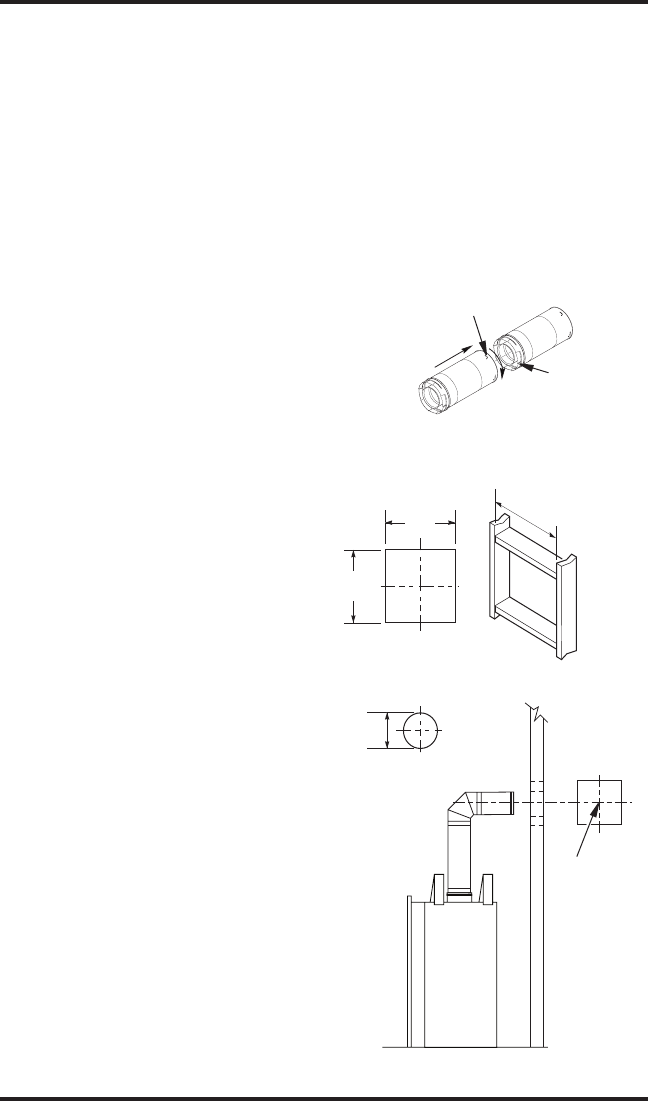
www.desatech.com
120441-01A 9
INSTALLATION PLANNING
There are two basic types of direct vent
installation:
• Horizontal Termination
• Vertical Termination
Outside air ex installation is required for
both horizontal and vertical installation (see
page 13).
Horizontal Termination Installation
IMPORTANT: Horizontal square terminations
require only inner portion of wall restop. Hori-
zontal installations using round termination
require exterior portion of wall restop.
1. Set the replace in its desired location and
determine the route your horizontal vent-
ing will take. Do not secure the replace
until all venting has been installed. Some
installations require sliding the replace
in and out of position to make nal vent-
ing connections. Figures 14 and 15 on
page 11 show different congurations for
venting with horizontal termination that
will help you decide which application
best suits your installation. Check to see
if wall studs or roof rafters are in the path
of your desired venting route. If they are,
you may want to adjust the location of the
replace.
2. Direct vent pipe sections and compo-
nents are designed with special twist-lock
connections.
Twist-Lock Procedure: The female
ends of the pipes have locking lugs (in-
dentations). These lugs will slide straight
into matching slots on the male ends
of adjacent pipes. Push pipe sections
together and twist one section clockwise
approximately one-quarter turn until the
sections are fully locked (see Figure 8).
Note: Horizontal runs of vent must be sup-
ported every three feet. Use wall straps
for this purpose.
3. Assemble the desired combination of pipe
and elbows to the replace ue collar. If
there are long portions of venting run, pre-
assembled pipe sections may be installed
as subassemblies for convenience.
VENTING INSTALLATION
Continued
Figure 8 - Vent Pipe Connections
Female
Locking Lugs
Male
Slots
Figure 9 - Vent Opening Requirements
Center of
Hole
4. Carefully determine the location where
the vent pipe assembly will penetrate
the outside wall. The center of the hole
should line up with the center-line of the
horizontal vent pipe. Mark the wall for
an 11
1
/
2
" x 11
1
/
2
" square hole. Cut and
frame the square hole in the exterior
wall where the vent will be terminated. If
the wall being penetrated is constructed
of noncombustible material, such as
masonry block or concrete, a 8
1
/
2
" hole
with zero clearance is acceptable (see
Figure 9).
(Framing
Detail)
11
1
/
2
"
11
1
/
2
" Inside Framing
11
1
/
2
"
8
1
/
2
"
Vent
O
pening
Combustible Wall
Vent Opening
Noncombustible Wall


















